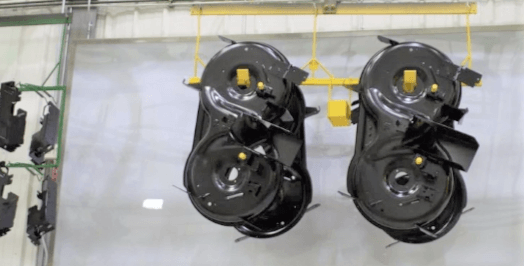 Lubricant removal will be easy if all necessary “homework”is done first. We’ve already discussed the huge differences one lubricant can have from another. But finishers must also consider how and for how long parts are stored prior to cleaning.
Lubricant removal will be easy if all necessary “homework”is done first. We’ve already discussed the huge differences one lubricant can have from another. But finishers must also consider how and for how long parts are stored prior to cleaning.
Dry-down residues of stamping lubricants can differ greatly from their “wet state” when applied. Compounding that difference can be issues like part to part contact, oxidation of the metal substrate as well as ingredients in the lubricant, handling of parts and the way and duration of cleaner solution contact to part surfaces.
Suffice to say—panel and part cleaning studies are highly recommended to make sure a water break-free (WBF) surface is obtained through the process. This testing allows for dwell/contact times, cleaner concentration, temperatures and cleaning chemistries to be honed to optimize performance of the surface treatment.
It would not be uncommon to make slight adjustments to cleaner pH, surfactant(s) or chelating characteristics to address differences in lubricants on parts. This has been done in the past and is regularly performed now to address changes in substrates being used, newer surface treatments like TMC, and changes made to paint chemistries due to changing regulations.
In the end, it’s about the best part being produced, in the safest and most responsible way.

